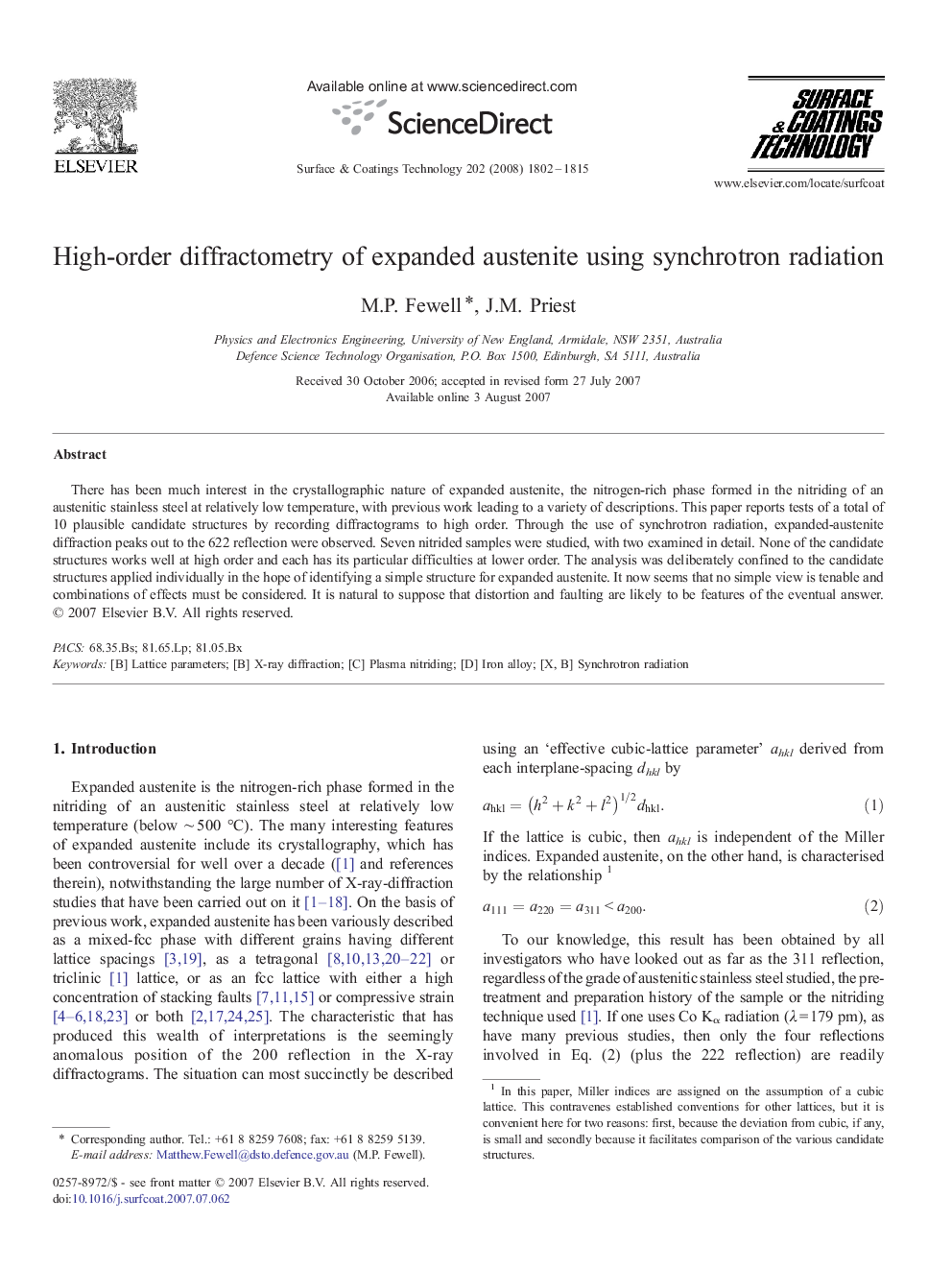| Article ID | Journal | Published Year | Pages | File Type |
|---|---|---|---|---|
| 1660688 | Surface and Coatings Technology | 2008 | 14 Pages |
There has been much interest in the crystallographic nature of expanded austenite, the nitrogen-rich phase formed in the nitriding of an austenitic stainless steel at relatively low temperature, with previous work leading to a variety of descriptions. This paper reports tests of a total of 10 plausible candidate structures by recording diffractograms to high order. Through the use of synchrotron radiation, expanded-austenite diffraction peaks out to the 622 reflection were observed. Seven nitrided samples were studied, with two examined in detail. None of the candidate structures works well at high order and each has its particular difficulties at lower order. The analysis was deliberately confined to the candidate structures applied individually in the hope of identifying a simple structure for expanded austenite. It now seems that no simple view is tenable and combinations of effects must be considered. It is natural to suppose that distortion and faulting are likely to be features of the eventual answer.
